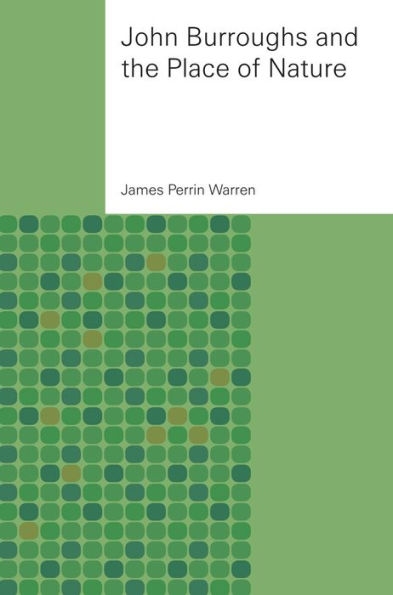This study situates John Burroughs, together with John Muir and Theodore Roosevelt, as one of a trinity of thinkers who, between the Civil War and World War I, defined and secured a place for nature in mainstream American culture. Though not as well known today, Burroughs was the most popular American nature writer of his time. Prolific and consistent, he published scores of essays in influential large-circulation magazines and was often compared to Thoreau. Unlike Thoreau, however, whose reputation grew posthumously, Burroughs wasa celebrity during his lifetime: he wrote more than thirty books, enjoyed a continual high level of visibility, and saw his work taught widely in public schools.
James Perrin Warren shows how Burroughs helped guide urban and suburban middle-class readers “back to nature” during a time of intense industrialization and urbanization. Warren discusses Burroughs’s connections not only to Muir and Roosevelt but also to his forebears Emerson, Thoreau, and Whitman. By tracing the complex philosophical, creative, and temperamental lineage of these six giants, Warren shows how, in their friendships and rivalries, Burroughs, Muir, and Roosevelt made the high literary romanticism of Emerson, Thoreau, and Whitman relevant to late-nineteenth- and early-twentieth-century Americans. At the same time, Warren offers insights into the rise of the nature essay as a genre, the role of popular magazines as shapers and conveyors of public values, and the dynamism of place in terms of such opposed concepts as retreat and engagement, nature and culture, and wilderness and civilization.
Because Warren draws on Burroughs’s personal, critical, and philosophical writings as well as his better-known narrative essays, readers will come away with a more informed sense of Burroughs as a literary naturalist and a major early practitioner of ecocriticism. John Burroughs and the Place of Nature helps extend the map of America’s cultural landscape during the period 1870-1920 by recovering an unfairly neglected practitioner of one of his era’s most effective forces for change: nature writing.
This study situates John Burroughs, together with John Muir and Theodore Roosevelt, as one of a trinity of thinkers who, between the Civil War and World War I, defined and secured a place for nature in mainstream American culture. Though not as well known today, Burroughs was the most popular American nature writer of his time. Prolific and consistent, he published scores of essays in influential large-circulation magazines and was often compared to Thoreau. Unlike Thoreau, however, whose reputation grew posthumously, Burroughs wasa celebrity during his lifetime: he wrote more than thirty books, enjoyed a continual high level of visibility, and saw his work taught widely in public schools.
James Perrin Warren shows how Burroughs helped guide urban and suburban middle-class readers “back to nature” during a time of intense industrialization and urbanization. Warren discusses Burroughs’s connections not only to Muir and Roosevelt but also to his forebears Emerson, Thoreau, and Whitman. By tracing the complex philosophical, creative, and temperamental lineage of these six giants, Warren shows how, in their friendships and rivalries, Burroughs, Muir, and Roosevelt made the high literary romanticism of Emerson, Thoreau, and Whitman relevant to late-nineteenth- and early-twentieth-century Americans. At the same time, Warren offers insights into the rise of the nature essay as a genre, the role of popular magazines as shapers and conveyors of public values, and the dynamism of place in terms of such opposed concepts as retreat and engagement, nature and culture, and wilderness and civilization.
Because Warren draws on Burroughs’s personal, critical, and philosophical writings as well as his better-known narrative essays, readers will come away with a more informed sense of Burroughs as a literary naturalist and a major early practitioner of ecocriticism. John Burroughs and the Place of Nature helps extend the map of America’s cultural landscape during the period 1870-1920 by recovering an unfairly neglected practitioner of one of his era’s most effective forces for change: nature writing.

John Burroughs and the Place of Nature
280
John Burroughs and the Place of Nature
280eBook
Related collections and offers

Product Details
| ISBN-13: | 9780820330815 |
|---|---|
| Publisher: | University of Georgia Press |
| Publication date: | 02/25/2010 |
| Sold by: | Barnes & Noble |
| Format: | eBook |
| Pages: | 280 |
| File size: | 3 MB |
